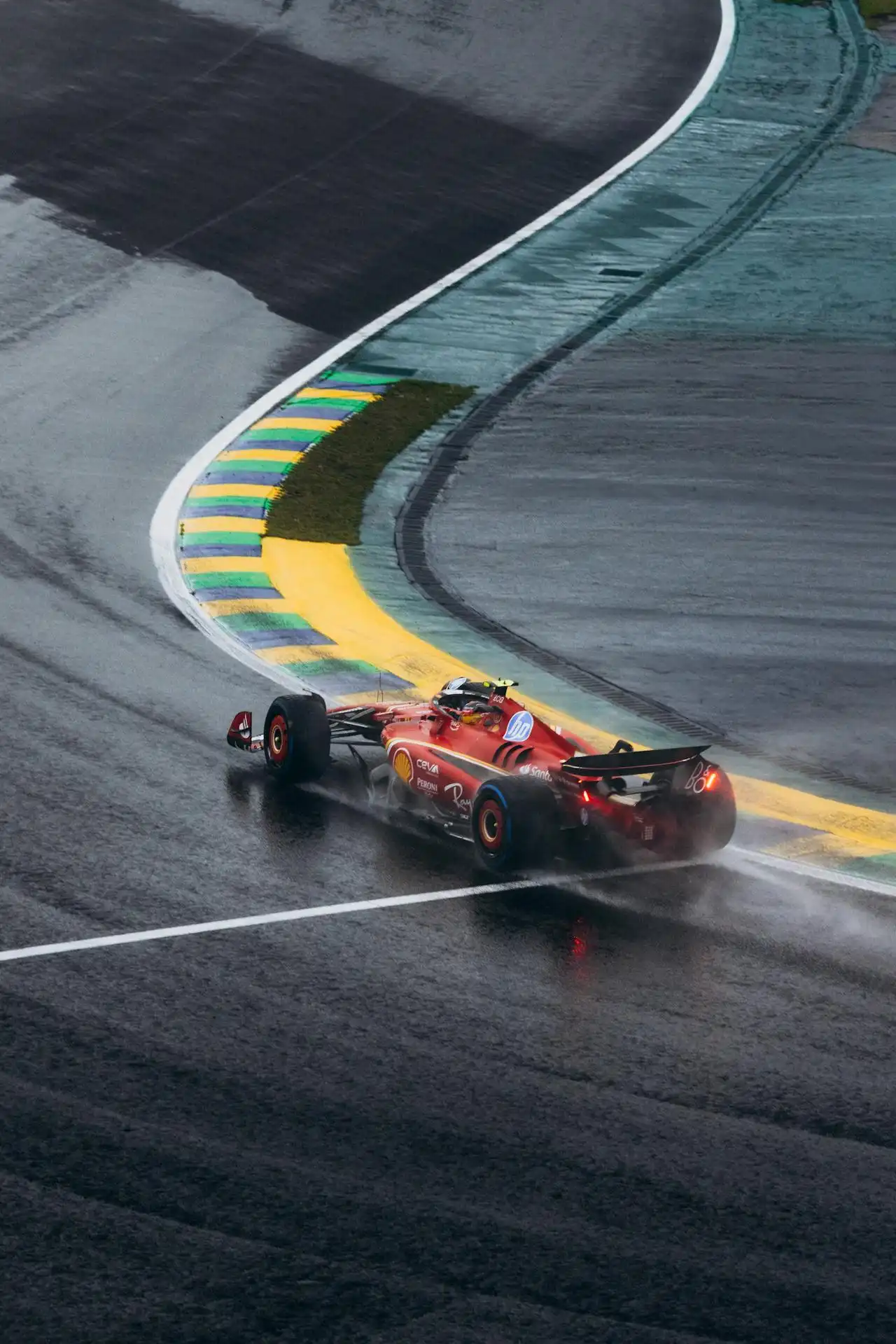From "Birdie" To "Par": A Dictionary of Golf Terms You Must Master
Muhe - Tuesday, 22 July 2025 | 08:30 AM (WIB)


The Scoring System: Beyond Just Hitting the Ball
First things first, scoring. Unlike most sports where higher numbers mean better, golf is all about less. The fewer strokes you take, the better. Got it? Good. Now let's talk about the bedrock of golf scoring: Par. Every hole on a golf course has a "par" associated with it – that's the number of strokes an expert golfer is expected to take to get the ball from the tee into the hole. Most holes are a par-3, par-4, or par-5. Think of it as the ultimate goal, the benchmark you're always aiming for. If you nail it, you just shot "par for the hole." Solid! Now, let's talk about the good stuff. A Birdie? That, my friends, is pure gold. It means you completed the hole in one stroke *under* par. So, on a par-4, you got it in three strokes. That's a cause for celebration, a little fist pump, maybe even a silent "yessss!" It's like finding an extra fry at the bottom of the bag – pure joy. And then there's the truly epic: an Eagle. This is two strokes under par. On a par-5, getting it in three strokes? That’s next-level stuff, the kind of shot that makes you feel like a superstar, even if it's just for a moment. And if you're lucky enough to witness or, dare to dream, achieve an Albatross (also known as a Double Eagle), which is three strokes under par (usually a par-5 in two shots, or a hole-in-one on a par-4), you've basically seen a unicorn. That's golf's equivalent of a total vibe shift. But let's be real, golf isn't always sunshine and birdies. More often than not, especially when you're starting out, you'll be making a Bogey. This is one stroke *over* par. A par-4 in five strokes? That's a bogey. Not ideal, but totally normal, even for seasoned players. Two strokes over? That’s a Double Bogey. Three? A Triple Bogey. You get the drift. Don't let it get you down, though; everyone has those rounds where they feel like they're just feeding the golf gods. And don't forget your Handicap. This isn't about physical ability; it's a numerical measure of your average score relative to par. It basically levels the playing field, allowing golfers of different skill levels to compete fairly. It's like your personal golf superpower, letting you adjust your score so you can still trash talk your friend who plays way better than you. No cap.The Course: Navigating the Green Labyrinth
Knowing the layout of the battleground is crucial. You start your journey at the Tee, the designated area where you take your first swing. You'll often use a small peg, also called a tee, to elevate your ball here. After a hopefully glorious drive, your ball will (ideally) land on the Fairway. This is the promised land: a neatly mown strip of grass stretching from the tee to the green. It's where you want to be. Stray too far off the fairway, and you'll find yourself in the Rough – that longer, thicker grass that can swallow your ball whole and make even a simple shot feel like an archaeological dig. It's a real buzzkill, let me tell ya. Then there are the natural and man-made obstacles. A Bunker, or Sand Trap, is literally a pit of sand. Getting out of one gracefully is an art form. It's like trying to escape quicksand while maintaining your composure. Water hazards, like ponds or streams, are simply called Hazards. Hit your ball in there, and that ball is gone, a watery sacrifice to the golf gods. You'll take a penalty stroke, drop a new ball, and try again. The small piece of turf displaced by your club after a swing is called a Divot. It's polite (and good karma) to replace it. And if your shot goes wildly off target and might hit someone, you better yell "FORE!" loud and clear. It’s the universal golf warning – no time for pleasantries, just a primal scream. Finally, the holy grail: the Green. This is the specially prepared area of extremely short grass surrounding the hole (or "cup"). This is where the magic happens, or where your hopes and dreams go to die, depending on your putting skills. The flagstick, with a flag on top, marks the location of the hole, making it easier to spot from afar. And speaking of "afar," don't forget the difference between your ball's Lie (how it's resting on the ground, e.g., "a good lie" or "a tough lie") and your stance when Addressing the Ball (getting into position before you swing).The Shots: Mastering the Dance
Every swing has a name. Your first shot off the tee is usually a Drive, executed with a driver, the biggest club in your bag, designed for maximum distance. As you get closer to the green, you’ll use different clubs for different types of shots. A Chip is a short, low shot, usually played from just off the green, designed to get the ball rolling quickly towards the hole. A Pitch is a slightly longer, higher shot, typically used to carry the ball over an obstacle or to land softly on the green. And once you're on the green, you'll use a putter for a Putt – a gentle stroke designed to roll the ball into the hole. These short game shots are absolutely game-changers, often separating the pros from the Joes. Sometimes your ball doesn't go straight, and that's okay, sometimes. A Slice is when the ball curves sharply to the right for a right-handed golfer (left for a lefty). It's a common bane of beginners. A Hook is the opposite, curving sharply to the left for a right-handed golfer. While slices and hooks are usually mistakes, more advanced players can intentionally shape shots. A Fade is a gentle, controlled slice, and a Draw is a gentle, controlled hook. These are all about precision, baby!Miscellaneous Must-Knows
Beyond the technical terms, there are a few social niceties and unspoken rules. A Mulligan? That's an unofficial do-over shot, usually given on the first tee if you really shank one. It's a friendly gesture, not an actual rule, so don't expect it in a serious competition. A Gimme is when your opponent concedes a short putt, agreeing that you would have made it anyway. It speeds up play and is a sign of good sportsmanship. And finally, a Caddie is someone who carries a golfer's bag and offers advice. They’re like your personal golf guru, and often worth their weight in gold for their course knowledge and moral support.Ready to Hit the Links?
Phew! That was a lot, right? But honestly, understanding these terms is half the battle won. It’ll make watching golf way more exciting and, more importantly, it’ll make your first few rounds on the course a whole lot less intimidating. You won't feel like you're playing charades with your golf partners. Golf, at its heart, is a beautiful game that combines skill, strategy, and mental fortitude with the sheer joy of being outdoors. Don't let the lingo scare you off. Embrace the learning curve, enjoy the fresh air, and pretty soon, you'll be dropping those birdies like it's no big deal. Go on, get out there and enjoy the walk!
Unleashing the Wild: A Deep Dive into the UTMB World Series
2 months ago

Marc Márquez Imbattibile: Hungary Dominance and a Preamble to the Title
2 months ago

Dump the Gym Membership: Your Guide to Feeling and Slimming Down, No Fancy High-Tech Equipment Required!
2 months ago

The Uncharted Frontier: Marc Marquez's Pursuit of Overcoming MotoGP's Last Frontiers
2 months ago

When Rivals Become Relatives (Of Sorts): Rossi and Stoner's Unexpected Chill-Out Session
3 months ago

The Unsung Hero of Marathon Training: Why Consistent Long Runs Are Your Secret Weapon
3 months ago

The Carbon Conundrum: Why Your Super Shoes Shouldn't Be Your Daily Drivers
3 months ago

Uncovering the World's Most Prestigious Cycling Races: From Grand Tours to Monumental Classics
3 months ago

The Rise of Ben Shelton: From NCAA Champion to ATP Masters Winner
3 months ago

A Champion's Whispers: Mika Hakkinen's Unvarnished Advice to Lewis Hamilton and Ferrari
3 months ago
